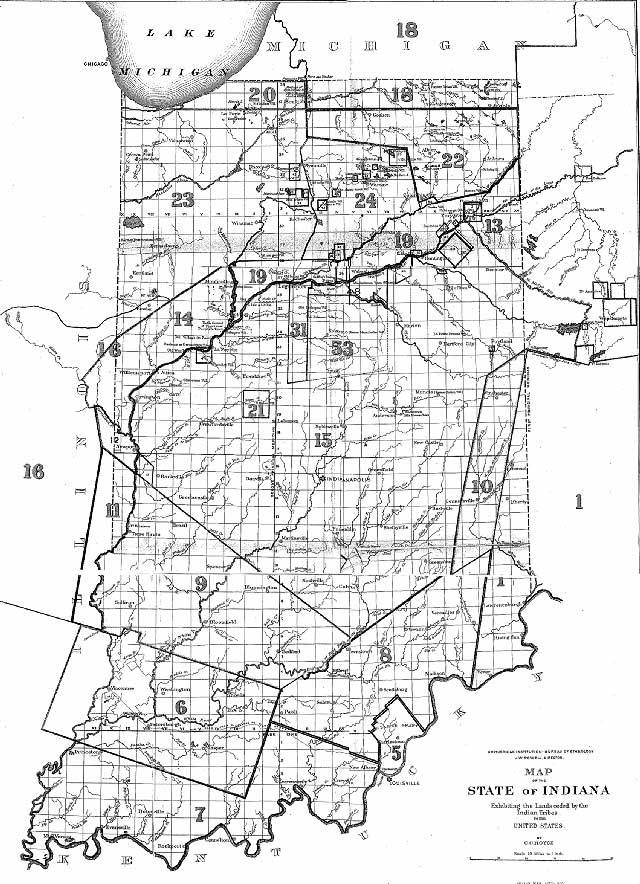E-text prepared by Janet Blenkinship
and the Project Gutenberg Online Distributed Proofreading Team
(/)
from page images generously made available by the
Bibliothèque nationale de France (http://www.bnf.fr/)
| Note: | Images of the original pages are available through the Bibliothèque nationale de France |
SMITHSONIAN INSTITUTION—BUREAU OF ETHNOLOGY.
J. W. POWELL, DIRECTOR.
CESSIONS OF LAND BY INDIAN TRIBES
TO THE
UNITED STATES:
ILLUSTRATED BY THOSE IN THE STATE OF INDIANA.
BY
C. C. ROYCE.
First Annual Report of the Bureau of Ethnology
to the Secretary of the Smithsonian Institution, 1879-80,
Government Printing Office, Washington, 1881, pages 247-262

CHARACTER OF THE INDIAN TITLE.
The social and political relations that have existed and still continuebetween the Government of the United States and the several Indiantribes occupying territory within its geographical limits are, in manyrespects, peculiar.
The unprecedentedly rapid increase and expansion of the white populationof the country, bringing into action corresponding necessities for theacquisition and subjection of additional territory, have maintained aconstant straggle between civilization and barbarism. Involved as afactor in this social conflict, was the legal title to the land occupiedby Indians. The questions raised were whether in law or equity theIndians were vested with any stronger title than that of mere tenants atwill, subject to be dispossessed at the pleasure or convenience of theirmore civilized white neighbors, and, if so, what was the nature andextent of such stronger title?
These questions have been discussed and adjudicated from time to time bythe executive and judicial authorities of civilized nations ever sincethe discovery of America.
The discovery of this continent, with its supposed marvelous wealth ofprecious metals and commercial woods, gave fresh impetus to the ambitionand cupidity of European monarchs.
Spain, France, Holland, and England each sought to rival the other inthe magnitude and value of their discoveries. As the primary object ofeach of these European potentates was the same, and it was likely tolead to much conflict of jurisdiction, the necessity of some generalrule became apparent, whereby their respective claims might beacknowledged and adjudicated without resort to the arbitrament of arms.Out of this necessity grew the rule which became a part of therecognized law of nations, and which gave the preference of title to themonarch whose vessels should be the first to discover, rather than tothe one who should first enter upon the possession of new lands. Theexclusion under this rule of all other claimants gave to the discoveringnation the sole right of acquiring the soil from the natives and ofplanting settlements thereon. This was a right asserted by all thecommercial nations of Euro